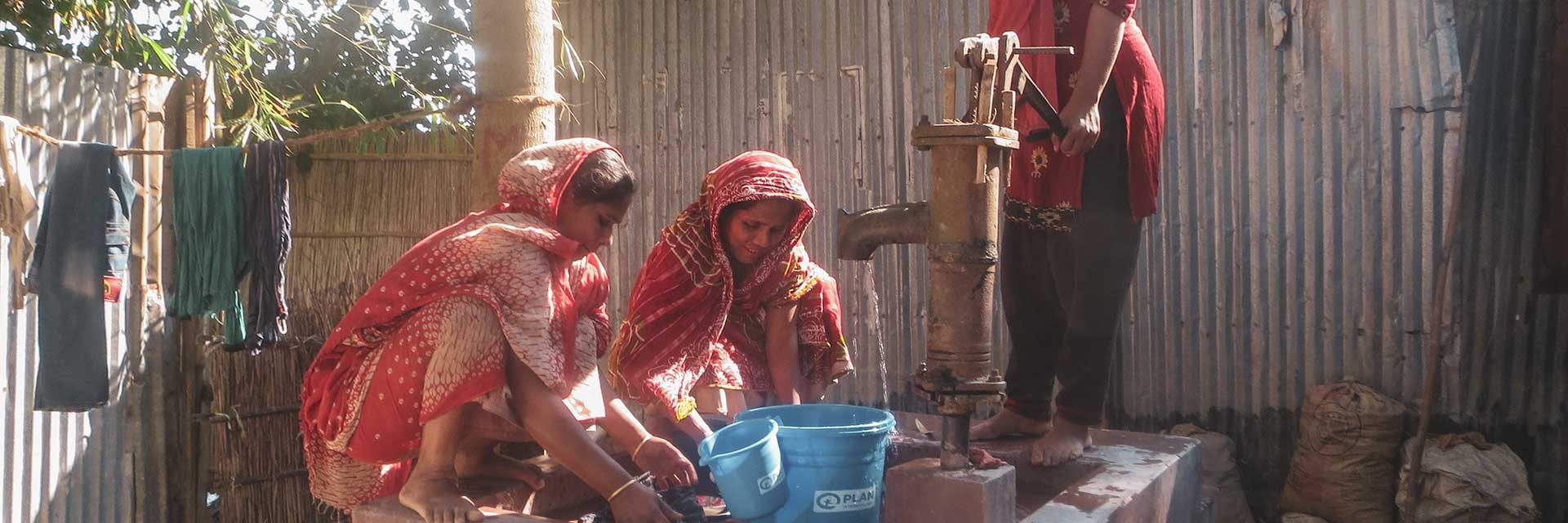
A group of women collects clean water from a new pump system in the district of Kurigram, Bangladesh following devastating floods in August 2017. Photo: Plan International Canada
Safe drinking water hard to find after devastating floods
Despite four full days of rain, which submerged one-third of her country, Sharifa Begum was in need of something vital: water.
A deluge contaminated water sources and damaged latrines across Bangladesh in August 2017. In fact, in some parts of the country, 80% of sanitation and water facilities were affected. Residents were left with no choice but to use dirty water and resort to open defecation. That increased the risk of diarrhea, cholera and dysentery, all waterborne diseases.
In response, Plan International, with funding from the Canadian Humanitarian Assistance Fund, repaired 300 tube wells, installed 1,400 household latrines, and provided 2,000 families with hygiene kits. Its staff also conducted sessions to increase awareness of safe hygiene practices in times of disaster.
Plan International’s timely humanitarian intervention helped significantly reduce the number of reported waterborne and hygiene-related illnesses. In all, Plan International reached 30,000 people.
“We used to drink water from a nearby pond. I learned from the awareness session that water collected from the pond was not safe for drinking and caused different diseases,” said Begum, a mother of three. “We use sandals while using latrines. We wash our hands properly using soap after using the latrine, before eating, before preparing/cooking foods. Now we (Aunt and I) do this all the time and tell my friends to do it.”